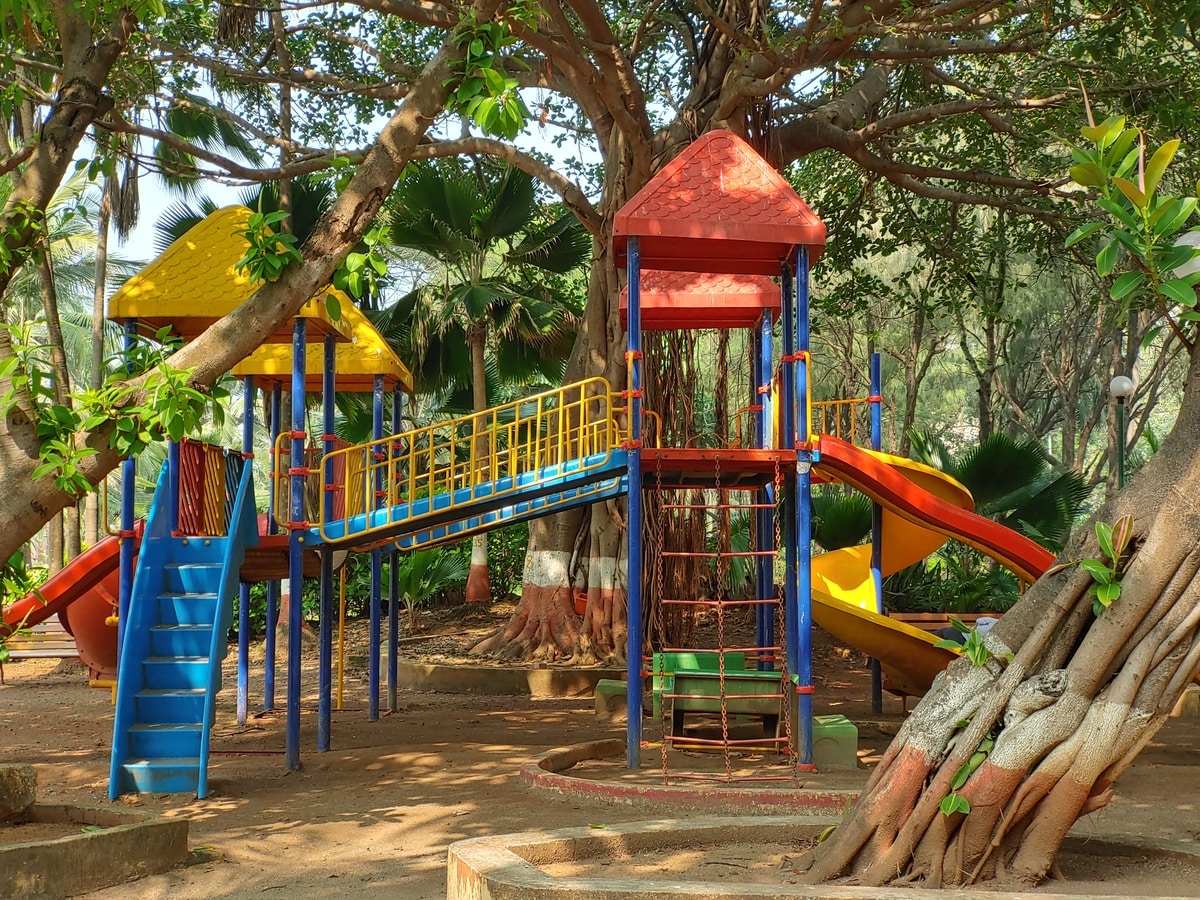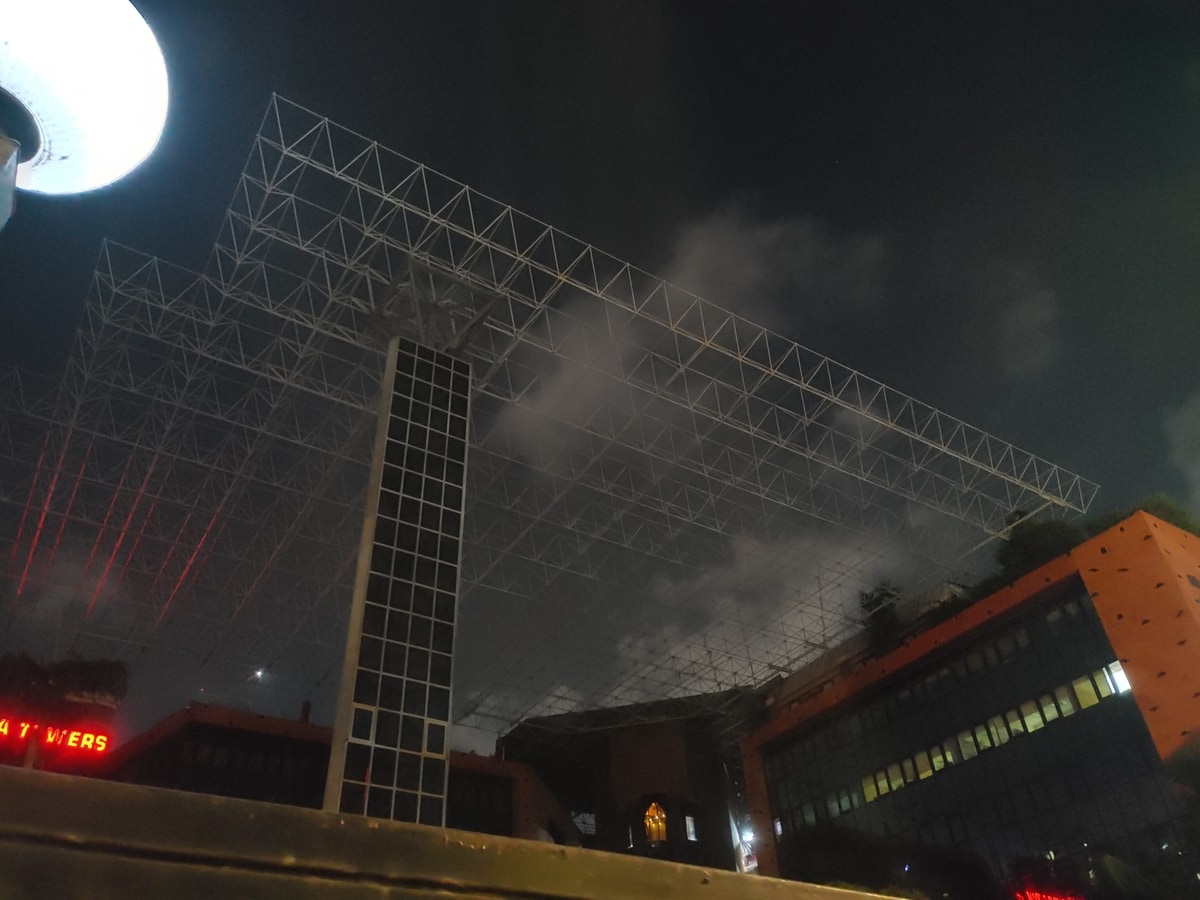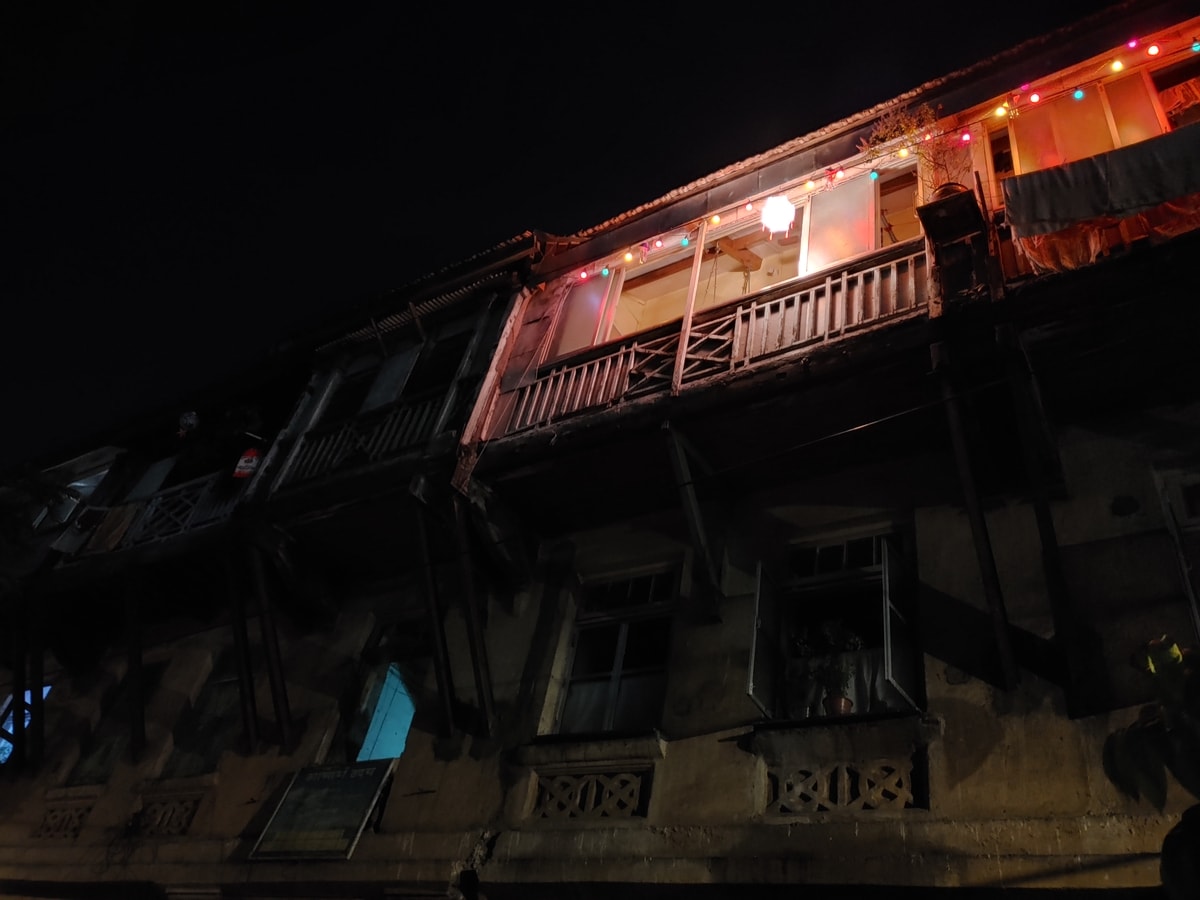Of all the big global brands in the smartphone space, LG is probably the most easily overlooked. The company doesn’t have a huge presence in the budget and mainstream segments these days, but still pushes out one premium V-series and G-series model every year. We’ve liked a lot of what we’ve seen, and these phones have impressed us with their cameras, displays, and overall performance. More importantly, LG seems to put a lot of thought into its products, with various little features and conveniences that stand out in an increasingly homogenous world.
The new LG G8s ThinQ has arrived in the Indian market quite a bit later than we would have expected for a 2019 flagship device, and so it doesn’t win any firsts in terms of specifications. Is this phone good enough to win over buyers who are looking at the current “value flagships” from OnePlus, Xiaomi, and others, or even more premium models from Samsung and Apple? We’re about to find out.
LG G8s ThinQ design
LG isn’t breaking any new ground with the design of the G8s ThinQ. In fact, it could almost be considered dated, with relatively chunky screen borders and an enormous wide notch. Most other manufacturers have already evolved to sleeker designs. One thing that jumps out immediately is the off-centre earpiece. This was probably necessary in order to accommodate a front camera as well as a Time-of-Flight 3D sensor and infrared illuminator, but it’s hardly an elegant solution.
This phone is available only in a Mirror Black finish in India, and LG wasn’t kidding when it chose the word ‘mirror’ to describe it. Both the front and back are made of glass, and both are incredibly shiny and reflective. The rear panel is effectively a mirror and it does look very slick and premium at first glance. However, it’s impossible to use this phone without smudging it, and fingerprints are picked up instantly.
Our review unit had a sticker on the rear with some regulatory information, and it left a residue that took ages to clean off. We were afraid of scratching the surface, but LG says there’s Gorilla Glass 6 on the rear and Gorilla Glass 5 on the front, which is reassuring. The frame of the G8s ThinQ is metal and also has a dark polished finish that blends in with the glass. It has an IP68 rating for water and dust resistance, and MIL-STD-810G compliance for resilience against shock.
There’s no doubt that this phone is built solidly. It feels very expensive and high-end, if not quite stylish. It’s relatively easy to handle at 7.99mm thick (with a barely-protruding rear camera strip) and 179g in weight. The glass is also not slippery at all, which was a huge relief to us. One-handed usage is possible, though not very comfortable.
The power button is placed right at the top of the right side and is completely out of reach. To make matters worse, it’s stiff and requires a bit of effort to press, especially through the included plastic cover. A tray below it can hold either two Nano-SIMs or one Nano-SIM and one microSD card, which is disappointing. The volume buttons on the left are also a bit too high, and there’s a dedicated Google Assistant button below them which is easy to press accidentally when trying to reduce the volume or take a screenshot.
Many people will be happy to see that the LG G8s ThinQ does have a 3.5mm analogue audio socket, making it a rarity in the premium smartphone space. This is on the bottom, next to the USB Type-C port and speaker. The three cameras on the rear are arranged in a horizontal strip, and there’s a fingerprint sensor below them. While a capacitive fingerprint sensor is another slightly dated feature on this phone, it is actually very convenient to reach.
Overall, the LG G8s ThinQ won’t turn many heads and doesn’t feel as fresh as many of today’s phones, so you might see it as underwhelming in terms of features compared to other current-day models. When you do get your hands on it though, it feels absolutely solid and built to a very high standard of quality.

The LG G8s ThinQ is built well but the glass rear gets smudged easily
LG G8s ThinQ specifications and software
The LG G8s ThinQ should not to be confused with the LG G8 ThinQ or the LG G8x ThinQ, which are all fairly similar in terms of specifications. Just like its exterior, this model has slightly dated components. We start with the Qualcomm Snapdragon 855 SoC, which has recently been superseded by the slightly faster Snapdragon 855+. While not outdated by any stretch, you can currently do better in the sub-Rs. 40,000 space.
LG offers only one configuration of this phone in India, with 6GB of RAM and 128GB of storage. It’s officially priced at Rs. 36,990, though it sells for slightly less online. You get a 6.2-inch full-HD+ G-OLED screen (1080×2248) with an always-on mode but no HDR. The battery capacity is 3550mAh, and Quick Charge 3.0 as well as wireless charging are supported.
Unfortunately there’s a hybrid dual-SIM tray which forces you to choose between a second Nano-SIM and a microSD card. The stereo speakers are tuned by Meridian, and DTS:X 3D enhancement is available. Other standards worth noting are Bluetooth 5, Wi-Fi 802.11ac, NFC, wireless charging, and three location services.
LG ships this phone with Android 9 and we were surprised to see the July 2019 security patch on our unit with no available update. To say that this UI is customised would be a massive understatement. LG has put its own stamp on pretty much everything, to the extent that it doesn’t feel much like Android at all (which was probably the intention).

The LG G8s ThinQ is one of a few premium phones with a 3.5mm audio jack
Starting with the lockscreen and homescreens, we have elaborate animated wallpapers that honestly got annoying after a while. There are loads of LG’s own apps as well as several from Google, all on the homescreens. We noticed that long app and folder names were awkwardly compressed, which just looks messy. You can choose between this single-layer UI, an app drawer, and a simple EasyHome layout with oversized icons and text. The Settings app is totally redesigned with four tabs, which makes finding even simple settings a bit of a process. The default keyboard is loaded with avatars, stickers, and more.
If you dig around, there are tonnes of UI and behaviour customisation options. You can even choose the colour of the navigation bar and apply effects to the area around the notch if it is masked. Looking through LG’s apps and the Settings app, we found several features including sound effect controls, fonts, gestures, app cloning, a floating shortcut bar, screen recording, and context-aware routines.
One of this phone’s highlight features is its Air Gestures, which use the front camera and sensors to detect waves and pinches in the air. You’re supposed to be able to launch apps from the homescreen, capture screenshots, control music playback, and dismiss calls or alarms. In the real world we found this frustratingly difficult to trigger. It worked only about once in twenty attempts despite plenty of time spent training with the built-in tutorial.
Similarly, Hand ID claims to let you simply show your palm to the front camera in order to unlock the phone. You’re warned during setup that it isn’t very secure, and we found it almost impossible to line up our palm just right. Face recognition on the G8s ThinQ was also a bit slow, but LG claims better security with its ToF sensor than most Android phones deliver with just a camera.
The last feature worth mentioning is LG’s always-on display which is genuinely useful. You can have multiple colours and select whether you want music controls, a calendar, or even a picture to be displayed. Overall, LG’s software is overstuffed and fatiguing. It reminds us of mobile phones from a decade ago when companies tried to differentiate themselves with gimmicks and distractions.
LG G8s ThinQ performance
The heavy UI animations on this phone seem to make simple things like unlocking it feel slow, but it’s actually quite snappy under all of that. The SoC is powerful enough to handle any current app or game, and there’s loads of RAM. We found that apps stayed ready to spring into action, and everything that you’d expect in a premium Android smartphone worked as it should.
Thankfully there’s no advertising spam, but we could have lived without constant notifications about LG’s apps being updated. There were also multiple messages warning us not to remove the phone’s battery while it’s running – which is impossible anyway.
We quite liked the display on the G8s ThinQ, aside from the notch, that is. It’s very crisp and vibrant, and we didn’t really miss HDR-level brightness. Games and videos were both pleasant. You get stereo sound through the speaker at the bottom in conjunction with the earpiece, and it’s relatively loud and clean-sounding.
Speaking of the earpiece, the off-centre location took a little getting used to but didn’t really make a difference to us in day-to-day life since it’s loud enough no matter how you hold this phone. LG also includes a headset with a nice braided cable and eartips in three sizes, which sounded okay but lacked bass.
Benchmark performance was good, but not the best we’ve seen from phones at this price. AnTuTu gave us 415,110 points while Geekbench 5’s single-core and multi-core test scores were 738 and 2,592 respectively. As for graphics, we got 57fps in GFXBench’s Manhattan 3.1 scene and 39fps in the Car Chase scene.
Of course we also spent some time playing PUBG Mobile, which ran at its high quality preset, and Asphalt 9: Legends. Both games were smooth and enjoyable. We didn’t find the G8s ThinQ getting too warm for comfort while gaming. This is very good performance but you can do better with the OnePlus 7T (Review) or gaming phones such as the Asus ROG Phone 2 (Review) at around the same price.
Battery life is also good but not great. Our HD video loop test ran for 11 hours, 51 minutes which is disappointing. Real-world usage was more favourable, and we easily got through a full day with about 20 percent left at night. During the day we played games for a while, took a lot of photo samples, streamed about an hour of video, and used the Internet constantly. Charging is also not especially quick – we got up to 15 percent in 12 minutes, and 69 percent in an hour.

You get a hybrid dual-SIM tray without a dedicated microSD slot
LG G8s ThinQ cameras
LG’s previous G-series and V-series phones have done well in the camera department and we were not let down by the G8s ThinQ. Camera performance is excellent overall even though the specifications might not seem impressive. This phone has a 12-megapixel f/1.8 primary rear camera with a 13-megapixel f/2.4 wide-angle camera and a 12-megapixel f/2.6 telephoto camera at the back. The primary camera supports optical image stabilisation as well as dual-pixel PDAF and HDR10 video recording. The front camera has an 8-megapixel resolution and f/1.9 aperture, and portraits benefit from the Time-of-Flight 3D sensor. Curiously, LG doesn’t specify the optical zoom range of its telephoto camera.
Of course LG has gone and absolutely stuffed its camera app with features and quirks, and not all of them are great for usability. To start off with, there are no fewer than 18 camera modes for stills and videos, plus more that can be downloaded. There’s no separate video mode; you can take a still or start recording with a single tap directly from the viewfinder. You can even choose which modes appear in the carousel above the shutter button. This is useful because it takes at least three taps to get to the spillover menu.
Tap to see full-sized LG G8s ThinQ photo samples (Top-bottom: wide-angle, standard, telephoto)
Some of these modes are extremely gimmicky, such as Flash Jump Cut which creates animations, and Cine Video which gives you adjustable filters and a targeted slow-zoom effect. AI Cam is a separate mode that suggests filters or adjustments based on what it detects the camera is pointed at. The Pro mode offers RAW file capture and presets for scenarios such as street photography or nightfall. Triple-Shot takes photos with all three cameras in sequence as a set that you can see side-by-side in the Gallery app. Speaking of the Gallery, it offers a huge variety of photo and video editing tools.
Switching between the three cameras is annoying since you have to tap one single button that cycles between them in a fixed order, and the icons for the standard and telephoto cameras are too similar. However a long-press brings up three frames with live previews of whatever you’re pointing at, as seen through each of the three cameras. This is truly useful and unique – but for all that LG shouts out its other features, this might go completely undiscovered. It also isn’t available while shooting video – you can only cycle through the three cameras, one at a time.
With all of that going on it would be easy to forget about the basics, but photo quality is really very good. The LG G8s was great at reproducing fine detail and vibrant colour, exposures were spot-on, and even complex scenes were captured well. Focus was just a little off sometimes, but you’d only notice that on very close examination. The wide-angle camera wasn’t as good at capturing details, and some shots looked a bit artificial. The zoom camera seemed to be more practical and useful.
Tap to see full-sized LG G8s ThinQ photo samples
Portrait mode doesn’t work on non-human subjects, but we’d only see an error message on screen after taking a shot. When it did work, edge detection was pretty much perfect and we were able to adjust blur intensity after taking shots. Even without portrait mode, close-up shots of flowers and objects had nice-looking natural depth.
At night, the LG G8s uses digital zoom through its primary camera rather than the actual telephoto camera, and there’s no indication of this to the user. The phone also seems to take a while to capture shots, which turn out very bright but potentially blurry. It’s a little surprising that so much processing is going on in the background, especially since there’s a separate night mode, and it can be hard to capture spontaneous shots. Quality is still very good. We were particularly impressed by how this phone rendered frames with points of light against dark backgrounds.
Video recorded using the primary camera is stabilised at 1080p as well as at 4K, but the usual rough jerks when walking were replaced by smaller little twitches. There’s a separate called Steady Cam which is recommended for shooting while walking. The quality of video overall is very good both in the daytime and at night.
You get plenty of modes to play with when using the front camera as well, but there’s no way to tell which ones will work, and the ones that don’t will just switch you to the rear camera without any warning. You can “green screen” yourself onto any backdrop, but we found the effect extremely cheesy and crude at best. All that aside, portrait as well as standard selfies were quite good.

The LG G8s ThinQ’s cameras offer quality as well as versatility
Verdict
LG’s entire approach with the G8s ThinQ is woefully out of date. It isn’t a bad phone for its price, but there are far more polished options out there, including the OnePlus 7T and the lower-priced Asus 6Z (Review) or Xiaomi Redmi K20 Pro (Review). The looks and hardware of the G8s ThinQ are somewhat out of date, and you don’t get things like very quick charging, an HDR or high-refresh-rate display, in-display fingerprint sensor, or notchless design. Had this phone actually gone on sale closer to its February announcement at MWC, it would have had a much better chance.
LG is banking on its cameras and software, and has thrown in everything including the kitchen sink. It can be a little overwhelming, and what’s truly unfortunate is that some of the best and most useful little touches are buried under a lot of fluff. If you’re the type who loves discovering and playing around with little features, this phone will keep you busy for a long time.
Despite all the bloat though, camera quality is genuinely very good. If that’s what matters most to you, the LG G8s wouldn’t be bad phone to buy. On the other hand, if you value gaming-grade performance, a high-end display, great battery life, or cutting-edge design, you should look elsewhere.







